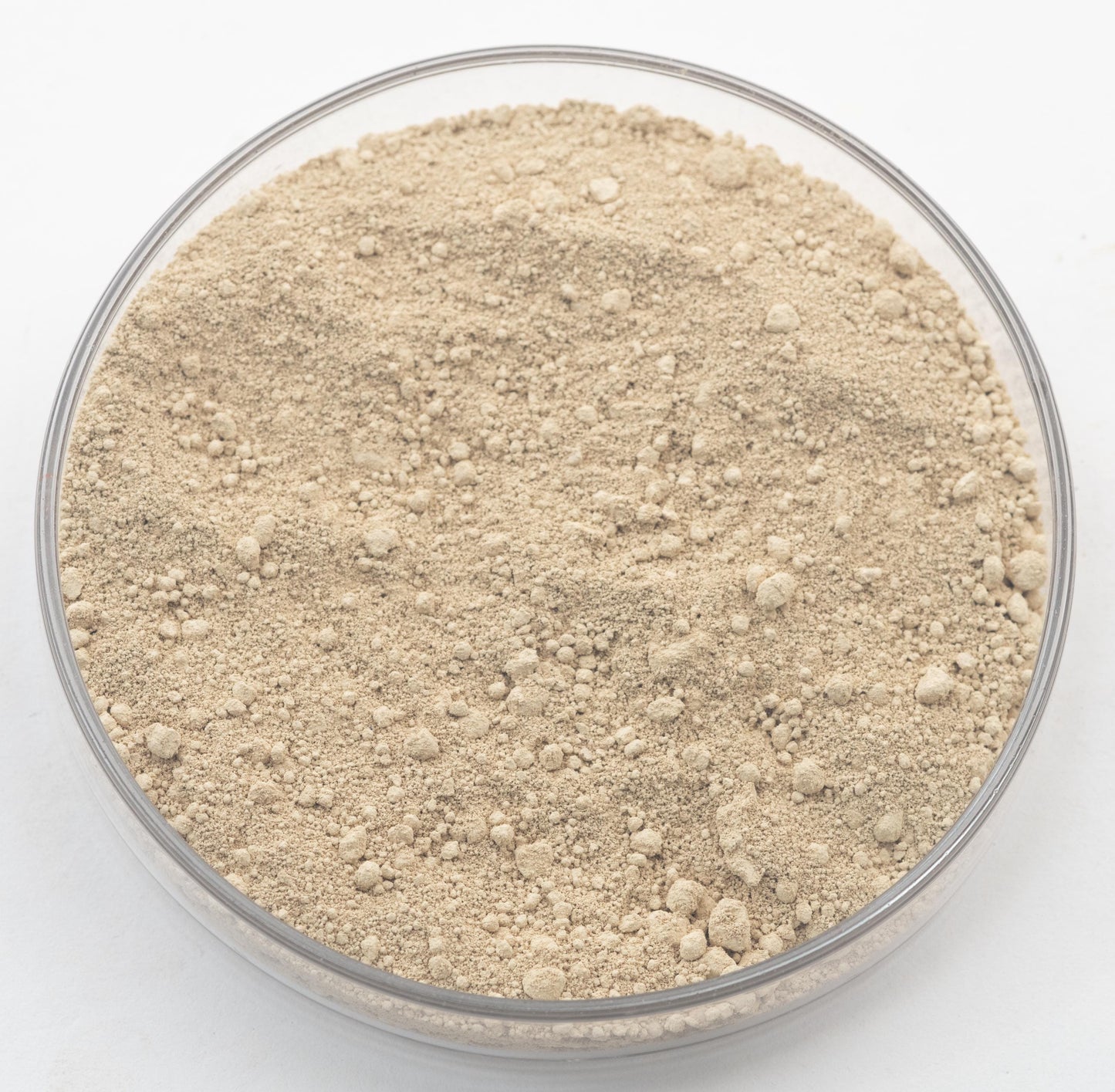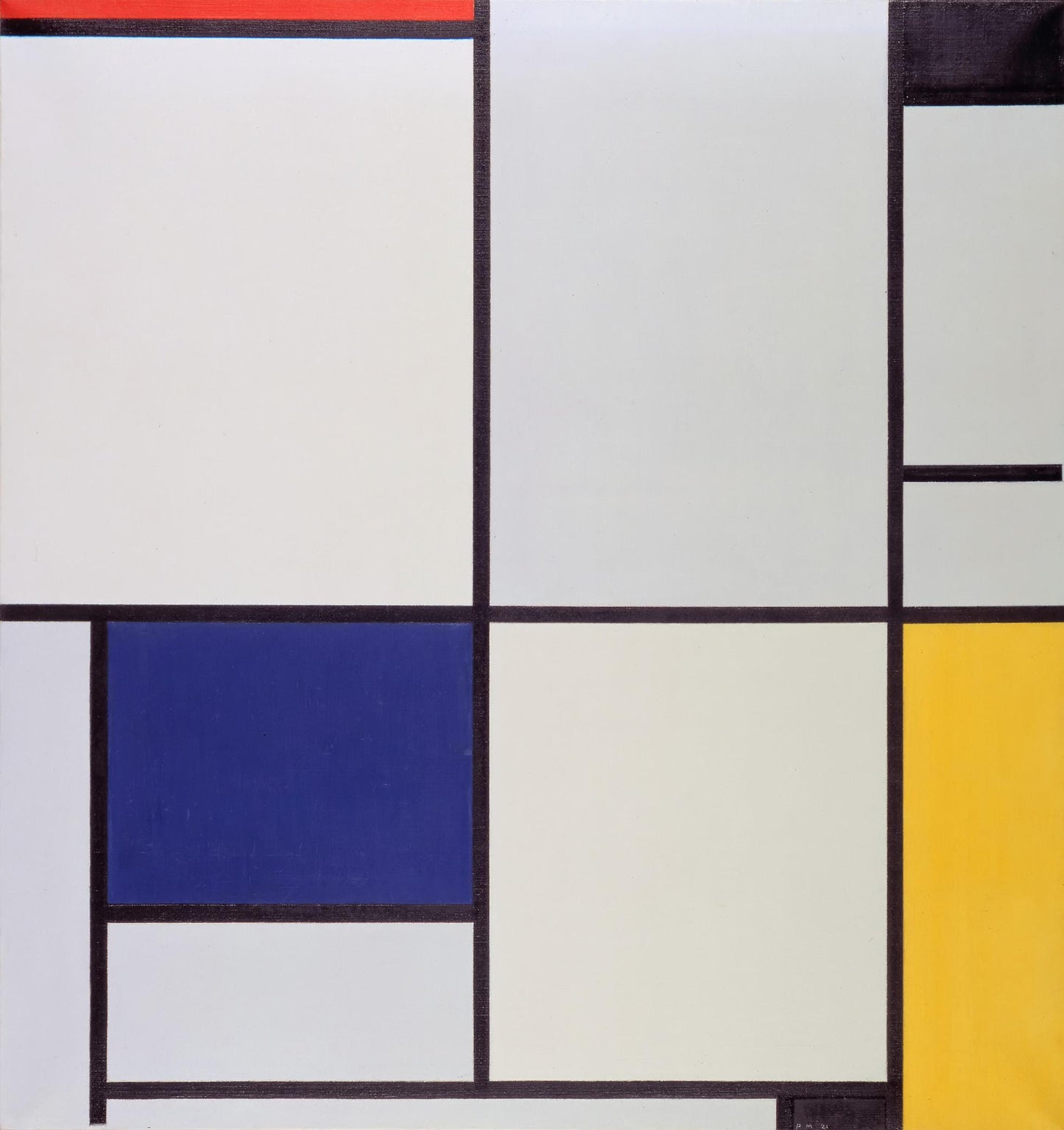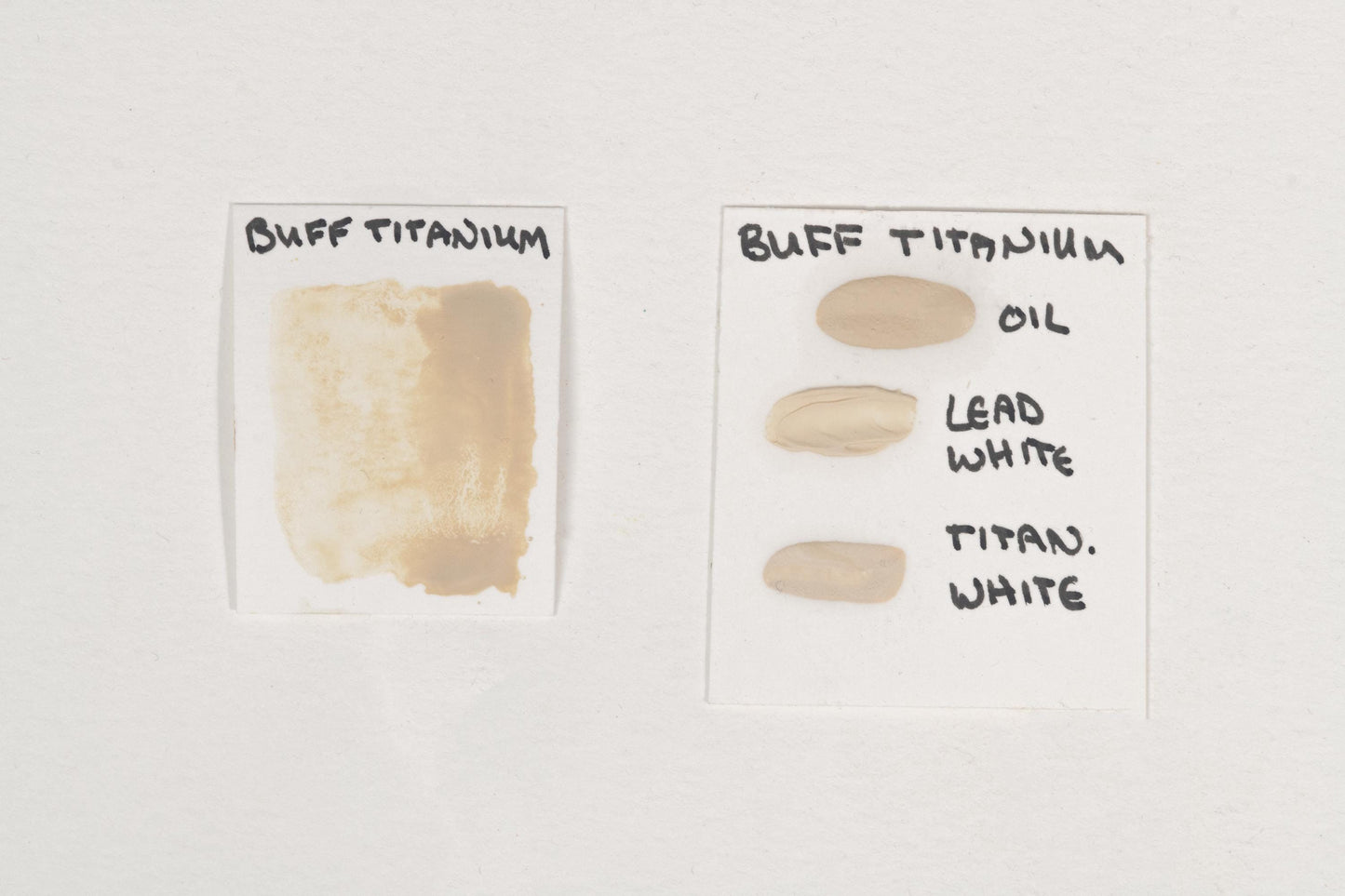Buff Titanium Rutile
Buff Titanium Rutile
Couldn't load pickup availability
Share



Description
Buff Titanium is a natural single-pigment, off-white color derived from titanium dioxide in its rutile form. Unlike pure Titanium White, Buff Titanium contains naturally occurring iron impurities, giving it a warm, creamy, and slightly yellowish hue. It has been processed and refined to remove excess minerals while retaining a soft, muted, and earthy tone, making it highly useful in painting and fine art applications.
Buff Titanium is prized for its subtle warmth, creating softer highlights and natural-looking light tones compared to stark white pigments. It has excellent opacity and tinting strength while maintaining a gentle, non-overpowering presence in mixtures. It is particularly useful for toning down high-chroma colors, creating warm neutrals, and achieving natural skin tones, landscapes, and organic textures.
History
Titanium dioxide pigments have been widely used since the early 20th century as non-toxic replacements for lead-based whites. The rutile form of titanium dioxide was developed as a stable, durable alternative to traditional whites, offering superior coverage, brightness, and permanence.
Buff Titanium itself emerged as an artist’s pigment in the mid-20th century, valued for its naturalistic, soft tone. It became popular in fine art painting, particularly in watercolor, oil, and acrylic techniques, where its warmth and subtle opacity provided depth without the starkness of pure white. In the pictured artwork 'Tableau I' by Piet Mondrian, Titanium Rutile is used throughout to create the strong whites, beige, and light colors of the piece.
In historical contexts, similar natural earth pigments were used to achieve warm whites before synthetic titanium colors became available. Artists and craftsmen often mixed earth pigments like ochres and raw siennas with white chalks to create analogous hues for painting, frescoes, and manuscript illumination.
Health and Safety
Precautions:
Keep out of reach of children and pets.
Do not consume.
Not for cosmetic or food usage.
For further health information, contact a poison control center.
Do not eat, drink, or smoke near dry pigments. Avoid breathing in pigment dust and use a NIOSH-certified respirator with a sufficient rating.
Wash hands after handling.
Pigment Information
Pigment Type: Synthetic (Inorganic), Titanium Dioxide (Rutile) with Iron Impurities
Suitable Mediums: Watercolor, Oil, Acrylic, Tempera
Lightfastness: Best (Highly stable and permanent)
Opacity: Opaque
Other Names: Unbleached Titanium, Warm Titanium White
Color Index Code: PW6:1
Image: 'Tableau I' by Piet Mondrian from the Kunstmuseum Den Haag



